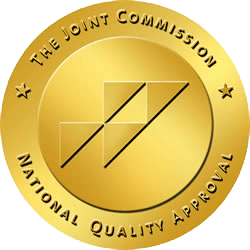Methamphetamine, or crystal meth, is extremely addictive because the body quickly becomes dependent on the substance. It can be difficult to stop using the drug because the body tells the brain that it needs the chemicals to feel normal. The meth withdrawal timeline doesn’t last forever, but going through detox can be uncomfortable without professional supervision. A high-quality rehab facility makes the process more comfortable and provides ongoing support to promote success in recovery.
Meth Withdrawal Timeline: The Crash
Methamphetamine produces a lengthy high compared to some other drugs. However, someone who uses the drug may continue to consume it as the effects wear off. This binge pattern maintains the euphoric effects and prevents a comedown crash. If the cycle of meth use continues, you could become addicted relatively quickly. People who have methamphetamine in their system continuously throughout the day will experience withdrawal symptoms within 24 hours of their last dose. According to American Addiction Centers, this crash period is characterized by excessive fatigue and lethargy. You may feel like it’s impossible to function, and you could be awake for hours despite exhaustion. Your mood and cognitive function are likely to suffer. Some also experience muscle weakness or pain.
Meth Withdrawal Timeline: The Cravings
As the crash gets more and more uncomfortable, most meth users start to feel a powerful desire to get high again. They may recognize that nothing brings them pleasure. It’s easy to assume that the only way to feel good again is to use the drug. Most individuals feel powerless to control their cravings. Having support during this stage of meth withdrawal is essential. This period can last for up to two weeks and is often accompanied by insomnia and depression.
Meth Withdrawal Timeline: Extinction
The final stage of meth withdrawal lasts the longest. For a few weeks, most individuals experience random cravings. They may feel better than they used to, but depression and psychological symptoms can persist. Although medically managed detox can help people get through the initial stages of the meth withdrawal timeline, long-term psychological care, peer support, and therapy help prevent relapse.
Getting Help for Meth Withdrawal
Meth withdrawal symptoms are predictable. However, they can vary depending on the frequency with which the individual used the drug. People who have used the drug for a long time will have more severe withdrawal symptoms than those who used it sporadically. Older individuals tend to feel detox more intensely than younger folks. If you’re a teenager who is trying to stop using methamphetamine, you may be able to get through detox alone. However, your mental and physical health play a role in the withdrawal process. Without medical and psychological support, you might have trouble sustaining a drug-free life. At Destinations for Teens, we offer a variety of treatment options to boost clients’ physical and mental health, such as:
If you or a loved one uses crystal meth, don’t wait to seek help. The longer you postpone rehab, the more uncomfortable and distressing withdrawal can be. Call us at 877-466-0620 today to learn how we can help you access wellness and find meaning in your life again.


